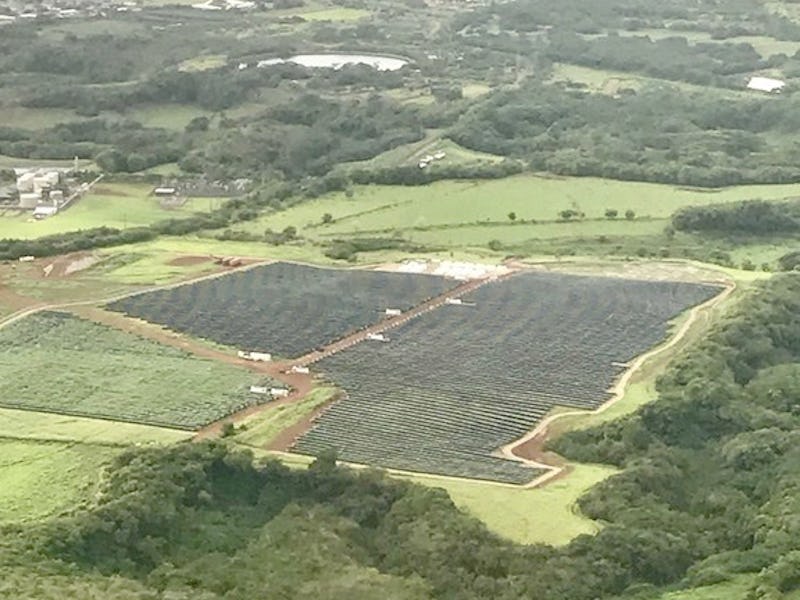Aerial Photos Reveal the Massive Tesla Solar Panels Powering Hawaii
A vision of a solar-powered future lies in Hawaii.

Tesla has been busy laying the foundations for the future of renewable energy. In March, the company unveiled a project to power the Hawaiian island of Kauai with a 52 megawatt-hour battery system and a 13-megawatt solar panel farm. The Kauai Island Utility Cooperative energy company claims the project will reduce fuel usage by 1.6 million gallons every year.
But until now, the solar farm has been largely depicted in company-provided press photos. On Friday, a Reddit user called Filippopotamus uploaded a picture shot during a honeymoon helicopter trip over the island, giving the public a glimpse of how these panels look in the real world.
“Flying around the island I saw many solar farms,” the user said in a comment. “Tesla’s was just one of the many I saw. I just knew it was Tesla’s because of the power packs, and the pilot confirmed it. Really happy to see so much solar here!”
The solar farm nestled in the hills.
In the picture, the panels effortlessly blend into the natural environment, with a slightly green sheen disguising their otherwise advanced technological nature.
Tesla solar panels from above.
“It doesn’t look that different from regular food crops. Other than being dark,” the user tells Inverse. “And you can’t see anything from ground level, only from above. I noticed that part of the solar farm was overgrown with grass. But I’m not surprised since nature grows fast here in the island.”
The panels blend into the environment.
Rather than Kauai Island Utility Cooperative owning the system outright, the energy company has signed a 20-year contract with Tesla to buy electricity for 13.9 cents per kilowatt-hour. The energy company struck the contract in a bid to meet its overall goal of generating half the island’s electricity from renewables by the end of 2019.
It’s not the only area taking advantage of Tesla’s renewables technology. Since Tesla acquired SolarCity in November 2016, CEO Elon Musk has been on a mission to prove how the two companies’ technologies can work together, demonstrating a house of the future with a Tesla Model 3 charged up via solar roof tiles.
The Powerpack 2, produced at the under-construction Gigafactory in the Nevada desert, is crucial to the company’s future success in renewables. The packs store energy in the 2170 cell, designed in collaboration with Panasonic, that can store energy at a higher density to enable a lower cost per kilowatt. These enable solar panels to store energy for use when the sun’s no longer shining. The new cells will also be used in the upcoming Model 3 vehicle.
Musk is looking to bring the Kauai system to other municipalities. Earlier this year, Musk offered to solve South Australia’s energy problems by installing 100 megawatts of battery storage at a price of $25 million within 100 days. The state depends heavily on renewables, but a lack of energy storage has led to power cuts. If he failed, the state could have it for free. If Tesla continues this momentum, the sight in the image above could grow commonplace.
Updated 5/8: Added more photos provided to Inverse by the user.